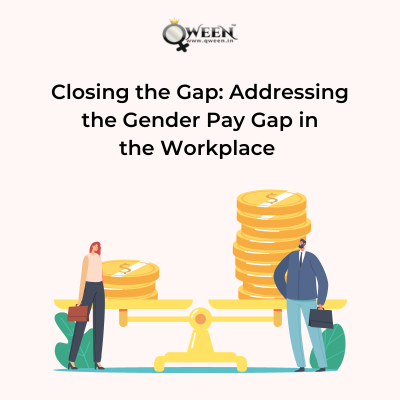

The gender pay gap is a persistent issue that has garnered significant attention in recent years. Despite progress towards gender equality, women still earn less than their male counterparts in many industries and professions. This blog explores the causes and consequences of the gender pay gap and provides insights into how we can work towards closing this gap in the workplace.
Understanding the Gender Pay Gap:
Definition and Measurement: Gender pay gap refers to the difference in average earnings between men and women.It is typically calculated as the ratio of women's earnings to men's earnings, expressed as a percentage.
Causes of the Gender Pay Gap:
Occupational Segregation: Women are often concentrated in lower-paying industries and occupations.
Vertical Segregation: Fewer women hold senior leadership positions, which tend to offer higher salaries.
Unconscious Bias: Stereotypes and prejudices can influence hiring decisions and contribute to pay disparities.
Motherhood Penalty: Women often experience a wage decrease after having children, while men may benefit from a fatherhood bonus.
Consequences of the Gender Pay Gap:
Economic Impact: The gender pay gap limits women's earning potential and economic independence.It perpetuates wealth disparities and contributes to a feminization of poverty.
Talent Drain: Pay disparities can discourage women from pursuing certain careers or staying in the workforce and organizations miss out on diverse perspectives and talents, impacting innovation and competitiveness.
Closing the Gap - Strategies and Solutions:
Pay Transparency: Companies should strive for transparency in salary structures, promoting fairness and accountability. Public reporting of gender pay gap data can hold organizations accountable and foster change.
Equal Pay Policies and Practices:
Implementing and enforcing policies that ensure equal pay for equal work.
Regularly reviewing and adjusting salary scales to eliminate gender-based discrepancies.
Promoting Gender Equality:
Encouraging diverse and inclusive hiring practices to combat occupational segregation.
Providing equal opportunities for career advancement and leadership roles.
Flexible Work Arrangements:
Offering flexible work options, such as remote work or flexible hours, to support work-life balance for both men and women.
Education and Awareness:
Promoting awareness about the gender pay gap through educational programs, workshops, and discussions.
Empowering women to negotiate salaries and advocate for themselves in the workplace.
Closing the gender pay gap is not just a matter of fairness; it is essential for creating a more equitable and prosperous society. By implementing the strategies mentioned above and fostering a culture of inclusivity, organisations can take significant steps towards reducing the gender pay gap and creating a more level playing field for all employees. Let us work together to build a future where gender does not determine one's worth or earning potential in the workplace.
Admin
0 Comments
4158 Views
To be the most preferred networking platform for women to help them cooperate, collaborate & grow together.